By Frank Schwerin, MD
Challenge Day is a California-based corporation that according to its handbook, “provides youth and their communities with experiential workshops and programs that demonstrate the possibility of love and connection through the celebration of diversity, truth and full expression”
The Challenge Day Corporation does not provide schools with anti-bullying or anti-suicide programs. According to the company’s own literature: “Challenge Day is not designed as a program to “fix” students who are struggling.”
Whether such a program should be a part of the high school curriculum has been controversial. A Seattle Times editorial opined, “It is alarming that nearly 300 Seattle Public Schools students have already participated in Challenge Day workshops. These 12- and 13-year-olds went through sessions reminiscent of est, or Lifespring encounter groups¦”¦While the goal of the seminars has merit ” to create a safe school environment free of teasing and harassment ” their methods don’t belong under the imprimatur of public education.”
One year ago, when I learned of Challenge Day while reading an article about it in my local newspaper the Naples News, I was not aware of the controversy surrounding the company. Challenge Day promised to make students feel “safe, loved and celebrated.” “No more teasing, no more belittling, no more gangs.” A follow-up headline one week later proclaimed: “Program stimulates students to be more accepting.”
All this was from a 6-hour workshop limited to 100 students per school – and it was free! Challenge Day previously had been “given” to two of our high schools by a group of volunteers who had raised money to sponsor the workshops.
It seemed too good to be true. The first Naples, Florida Challenge Days were obviously important to the Challenge Day Corporation. The local press had been enlisted to photograph and interview the participants The founders of Challenge Day, Rich Dutra-St.John and his wife Yvonne St. John-Dutra (you read it right) flew out to Florida from California to personally lead the “showcase” workshops held here last year.
The Dutras also personally lead the Challenge Day at a Michigan high school that was recently featured on Oprah.
Why Naples?
It may have had something to do with money. At the time, the median house price in Naples was nearly five hundred thousand dollars, the highest in Florida. And a charity fundraiser to benefit local education programs had raised a record twelve million dollars earlier in the year. If they could raise sufficient funds, anything was possible.
Challenge Day organizers didn’t need the financial support of the school district.
The promoters of Challenge Day pitched the program directly to the high school principals. One organizer stated that her goal was for Challenge Day to be in every Collier County high school and middle school by 2007.
Things didn’t work out as planned in Collier County. Two months later the county school board ordered a temporary moratorium on Challenge Day in order to look into safety issues. Three months after that, following an extensive review by the Collier County school administration, a permanent hold was placed on the workshops. And the school board ultimately said “no” to the program.
What went wrong?
As more information about the company surfaced, it became clear that the Challenge Day press kit didn’t tell whole story.
The unofficial Challenge Day history
The company was incorporated as a California non-profit corporation in 2001 and has expanded rapidly since then. Challenge Associates, a privately held LLC, owns the Challenge Day trademarks and licenses them to the non-profit corporation.
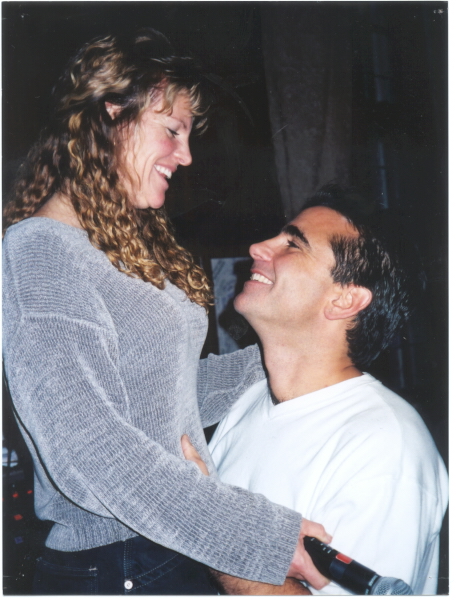 Challenge Day’s early history is murky.
Challenge Day’s early history is murky.
The company states that the first Challenge Day was held in 1987. Beyond revealing that date, they provide few details of the early years. In one article Yvonne St. John-Dutra, a Challenge Day founder, states that its first program was offered as a 14-hour “marathon” Saturday workshop in Livermore, California. She says, “Within a few months it became clear that hosting our 14-hour program on Saturdays would not allow us to reach the youth who needed us most. Again it was Ann and Diane who gave us the opportunity to try our first six-hour Challenge Day on school grounds during a school day (our current model). Whether they were simply very wise women or angels on a special mission from God, their faith in our work helped to plant the seeds of a movement that has become much larger than we had ever imagined.” (HAI Community Journal)
Challenge Day first pops up on the Google radar screen in 1997, when a chapter about the program was included in Jack Canfield’s Chicken Soup for the Teenage Soul. Prior to that book, it appears that the workshops were limited to a handful of schools and mental health facilities in Northern California. One such facility, Oakland’s Thunder Road, is where the Dutras met while working. Challenge Day accelerated its expansion after it was “invited” to Colorado in 1999 subsequent to the Columbine tragedy.
A New Age religion?
“The Challenge Day organization takes a holistic approach (addressing the Body, Mind, Heart and Spirit) in all we do. This includes spending some time at the beginning of our meetings where we celebrate spiritual diversity by taking a minute or two for someone to open the meeting in their own way,” says the program literature.
The following is an excerpt from an interview with Rich Dutra that appeared in the Hoffman Institute publication “Light News.” The Institute is the sponsor of a program called “The Process,” which Dutra graduated from in 1993.
Question: “Did your vision for Challenge Day change after you did The Process?”
Rich Dutra: “I got that Challenge Day is bigger than anything I’d dreamt of “ that it was more spiritual and that the work is a gift we’ve been invited to shepherd.”
Question: “Does Challenge Day expose young people to the notion of a Spiritual Self?”
Rich Dutra: “Yes, and it’s amazing! We tell kids to look inside their hearts, and whatever it is that gives them goose bumps is what they’re supposed to be doing with their lives.”
Self-promotion and outrageous claims are the hallmarks of many companies specializing in workshops, seminars and mass marathon training.
When interviewed about Challenge Day, corporation employees, volunteers and participants often use verbiage such as “amazing.” “best day of my life,” “transformational,” “life-changing,” “spiritual” and “miracle.”
Two program leaders, recently told the Alberta Daily Herald-Tribune, “In 18 years of the program, we’ve never once had an unsuccessful day.” Challenge Day is headquartered in the San Francisco Bay Area, which is an epicenter of the New Age movement. And it conducts advanced training workshops for a fee.
The Challenge Day in-school program uses techniques common to mass marathon training companies. For this reason, it should be no surprise that the Challenge Day Corporation has multiple ties to personal development gurus and seminar companies. It was during the late 1990s, in the midst of its rapid expansion, that Challenge Day began to share employees and techniques with the secretive Human Awareness Institute (HAI), a company that specializes in intimacy and sexuality workshops.Several Challenge Day leaders were also employed as HAI workshop facilitators.“[Human Awareness Institute and Challenge Day] ¦share many common principles, beliefs and goals. Challenge Day requests that this connection’ not be spoken of outside the HAI community due to sensitivity about programs for schools being associated with workshops on love, intimacy and sexuality” (Editor: HAI Community Journal (HCJ), Nov/Dec 2002).Jeff Parrett, a current member of the Challenge Day Board of Directors, continues to be open about his association with HAI association and another mass marathon training organization called the “Mankind Project.”
According to Parrett, “¦Challenge Day is a one-day experiential workshop designed to help our youth connect with themselves and one another in a deep way. Similar to HAI workshops, the exercises in Challenge Day are done either in dyads, small groups or with the whole group. Each exercise builds on the next. The day is carefully scripted¦ to take the participants either deeper inside themselves, or lighten the mood to prevent things from getting too intense, too quickly.” (HAI Community Journal.)
Tightly controlled
Not only are the workshops carefully scripted, the entire event is tightly controlled. The following instructions are from a Challenge Day handbook and literature:
“Secure a private room -It must be free from interruptions for the duration of the Challenge Day program.”
“Windows below eye level in the room must be covered.”
“6-1„2 hours (including lunch) is the ideal amount of time for a Challenge Day.”
“There is one short bathroom break during the morning and a 20-30 minute working lunch break (over which students eat together and are given assignments that help them get to know each other).”
“It is ideal for bathrooms to be located inside or just outside the room.”
“Lunch will be held inside the room where the program is being conducted.”
“Participants (including Adult Volunteer Facilitators) will be asked to remain on site. No exceptions.”
The following warning suggests a reason for the tight control of the meetings.
The company wants to produce the maximum psychological impact.
Leaders are advised that “If lunch arrives late we may need to significantly alter the activities for the day, which can have a profound effect on the overall impact.”
Challenge Day leaders with ties to seminar companies
Lynne Twist, Challenge Day Global Leadership Council says, “Everybody has milestones and epiphanies. Mine came in the est training which I took in 1974 with Werner Erhard.”
 Mike Robbins, Challenge Day Board of Directors says, “The Landmark Forum, impacted my life as much as anything I have ever done. The Forum and all of Landmark’s courses are amazing.”
Mike Robbins, Challenge Day Board of Directors says, “The Landmark Forum, impacted my life as much as anything I have ever done. The Forum and all of Landmark’s courses are amazing.”
Debbie Ford, Challenge Day Global Leadership Council writes in her book Spiritual Divorce, “While attending school I also began leading transformational seminars for Landmark Education.”
Who needs data if the program makes you feel good?
Unlike mainstream school anti-bullying or anti-suicide programs, Challenge Day lacks outcome data or an endorsement by the Substance Abuse and Mental Health Services Administration (SAMHSA).
Why does Challenge Day seem reluctant to provide data about the effect of their programs on students?
In its “Frequently Asked Questions” the organization says, “There have been several studies on Challenge Day, all of which have provided valuable feedback about how positive and long lasting the changes in many areas are as a result of our programs. Because each of these studies has been done in a different format, we have not been able to compile them into one meaningful study.”
Oprah has called Challenge Day a “daring experiment.”
To assess a school program, administrators, teachers and parents need to see the results.
 Fortunately, outcome data is available, courtesy of the Florida Department of Education.
Fortunately, outcome data is available, courtesy of the Florida Department of Education.
Data is available on absenteeism, test scores, suspensions, violence, and harassment.
Known as School Environmental Safety Incident Reports, the data is broken down by school, district by district and year by year, going back to the mid-1990s.
The Florida Department of Education will release data from the 2005-2006 school year in early 2007.
Manatee County was one of the first Florida counties to host Challenge Day. However, the program has recently been canceled at two of the three participating schools in Manatee County. Looking at school data from Manatee County in the years before and during Challenge Day, violence and suspensions actually increased dramatically at two of the participating high schools during the Challenge Day years. This occurred while the numbers actually improved for the entire State of Florida during the same period.
Looking at combined data from Manatee High and Palmetto High in Manatee County, the number of students with at least one out-of“school suspension increased from 14.5% in 2000-2001, just prior to Challenge Day, to 18% in 2004-2005 after several years of Challenge Day. According to the Florida Department of Education during this same period incidents of violent crime and harassment increased from 25 to 90.
I am not implying that Challenge Day had anything to do with these numbers.
But on the other hand, the company does claim to improve the “climate” of the school as a whole. And it would be reassuring to see some objective confirmation of this claim.
Challenge Day and/or schools interested in hosting the program should be using the Florida Department of Education data retrospectively to see what effect, if any, these programs have had at schools that have hosted their workshops.
Could Challenge Day be harmful?
The safety of an in-school program is one of the most important considerations of a school administrator. Protection of student confidentiality is another solemn responsibility of teachers and administrators.
Few would deny the potential danger of untrained adult volunteers and older teen “mentors” discussing sexuality, eating disorders, violence, depression and suicide with eighth and ninth graders in small groups.
The Jessica Lunsford Act was signed into law last year by Florida Governor Jeb Bush. The law requires Level 2 screening and fingerprinting for paid leaders that have prolonged and emotional contact with our children.
The centerpiece of the Challenge Day workshop, “Crossing the Line,” grew out of “The Power Shuffle,” which is an exercise for adults that included violent offenders and substance abusers at the Oakland Mens Project. The following warning appears in the Power Shuffle guide; “As a final word of caution, this exercise should only be used by experienced facilitators who are comfortable with helping people process strong reactions in a group setting. If this exercise does not feel safe for your group, it’s best to omit it.”
If the “Power Shuffle” may not be safe for adults, what effect could it have on young teens?
Unlike the adults who volunteer to participate, students are often required by their schools to participate in the “Power Shuffle,” unless they have chosen to opt out.
It seems likely that public admissions of deeply personal experiences could be harmful to vulnerable or emotionally disturbed students.
Here is how one reporter working for the Sonoma News recently described her personal experience with Challenge Day as a 16-year-old student in Marin County several years ago. “Everything was going fine until a middle-aged man intercepted one of my hugs and wrapped me in a tight embrace, hands rubbing up and down my back. … As a 16-yearold girl trapped in an uncomfortable hug with an older man, I began to wonder if this day could get worse. It did¦” She continued, “Maybe it’s just me, but I’m not comfortable sharing the worst moments of my life by crossing a line in front of 300 people…”
According to a report published by Whole Earth Review (Spring 2003) students as young as 14 were asked to “Cross the Line” if…
“You have ever been… called bitch slut or whore.”
“You have ever been called gay, fag or homo.”
“You or someone in your family has ever been raped or sexually molested.”
“Someone in your family is an alcoholic.”
“you or someone in your family is or has been struggling with an addiction to prescription, or illegal drugs.”
“you have ever witnessed someone being brutally beaten or killed.”
“You have ever thought seriously of, or if someone you care about has ever seriously thought of, or ever attempted, committing suicide.”
How can the claimed success of Challenge Day be explained?
Hugs, tears and apologies can be quite compelling.
Oprah says, “This is how we change the world.”
However, lacking meaningful data, any claim of benefit to students is based on anecdotes and assumptions.
Why would over 600 public schools each year require their students to miss an entire day of class for Challenge Day without objective proof to demonstrate its results through carefully collected and verified data?
Our experience in Collier County may provide an answer.
In many cases, schools do not have to pay for the program.
Last year, volunteers in Collier County raised $12,000 for each of the participating Challenge Day schools.
The Challenge Day corporation charges approximate $3,000 per school – plus expenses. And some of that money was used to pay a stipend to a faculty “coordinator” whose job was to perpetuate the program at his or her school.
School administrators or teachers can actually make money by hosting a Challenge Day!
After discovering that local Challenge Day boosters had paid school officials to host the program last year, the Collier County school district required that such funds should be distributed through the payroll system. In addition, the school district made a recommendation that if the program was to continue, all sources of funding should be disclosed to the district.
Instead, the school board chose to put a permanent hold on the program.
The bottom line
The Challenge Day corporation has a voracious appetite for expansion. The company uses the term “movement” to describe itself. And the program does not end with the 6-hour in-school workshops. Student participants and the twenty adult volunteers per workshop, are recruited to join the “Be the Change” movement. In addition, many participants in the program are recruited to attend advanced workshops in California, for a fee.
Participants should have no expectation of privacy. That is, something that a student might blurt out after six hours of mind games might end up defining that student for the remainder of his or her time in high school.
Our children should not be subjected to this self-described “daring experiment.”
There are safer more proven alternatives, such as anti-bullying and anti-suicide programs, which are available.
 The man supposedly tuned in to heaven is Jonathan Bernis, who heads a so-called “Messianic Jewish” group.
The man supposedly tuned in to heaven is Jonathan Bernis, who heads a so-called “Messianic Jewish” group.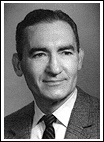 However, when the evangelist died in 1998, what he had accomplished could largely be measured in property assets.
However, when the evangelist died in 1998, what he had accomplished could largely be measured in property assets.


 Challenge Day’s early history is murky.
Challenge Day’s early history is murky. 
 Fortunately, outcome data is available, courtesy of the Florida Department of Education.
Fortunately, outcome data is available, courtesy of the Florida Department of Education. 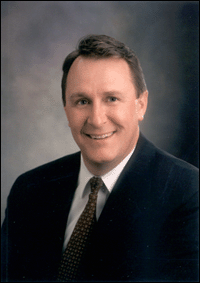 Shurtleff has seemingly decided to throw in with
Shurtleff has seemingly decided to throw in with  However, the basis for the rundown is the incredible and unproven claim made by Sci-fi writer turned religious revelator
However, the basis for the rundown is the incredible and unproven claim made by Sci-fi writer turned religious revelator 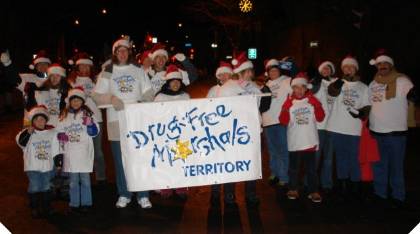
 And such “festive tales” are only told to Scientologists after they have paid for enough “religious services” to be properly prepared to hear them.
And such “festive tales” are only told to Scientologists after they have paid for enough “religious services” to be properly prepared to hear them. Perhaps the most appropriate “Christmas show” linked to Scientology is “A Very Merry Unauthorized Children’s Scientology Pageant” by
Perhaps the most appropriate “Christmas show” linked to Scientology is “A Very Merry Unauthorized Children’s Scientology Pageant” by  The would-be forbidden video is titled
The would-be forbidden video is titled 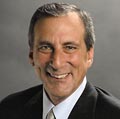 Apparently, Landmark President Harry Rosenberg and his General Counsel Art Schreiber quickly sprung into action, managing to purge the film from servers, with bogus claims regarding the company’s copyright.
Apparently, Landmark President Harry Rosenberg and his General Counsel Art Schreiber quickly sprung into action, managing to purge the film from servers, with bogus claims regarding the company’s copyright. To see it on Google —
To see it on Google —  Schuckardt was accused of embezzlement, sexually abusing children and drug addiction. He died from cancer in early November.
Schuckardt was accused of embezzlement, sexually abusing children and drug addiction. He died from cancer in early November.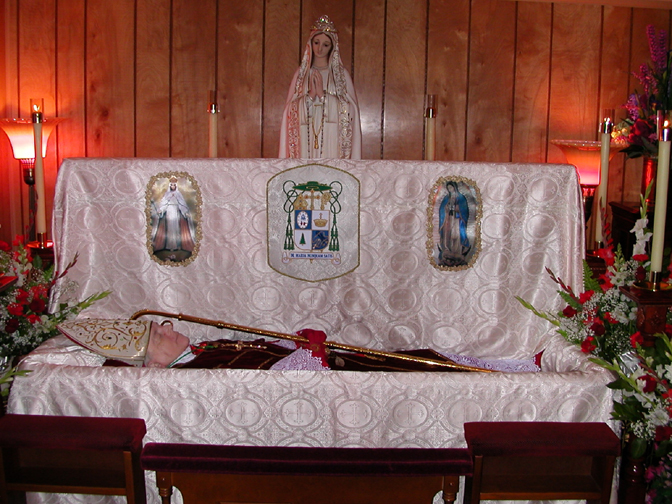 Steven Kyle Kirkland and Donovan Patrick Olsen, both TLRC members, were charged in October.
Steven Kyle Kirkland and Donovan Patrick Olsen, both TLRC members, were charged in October.